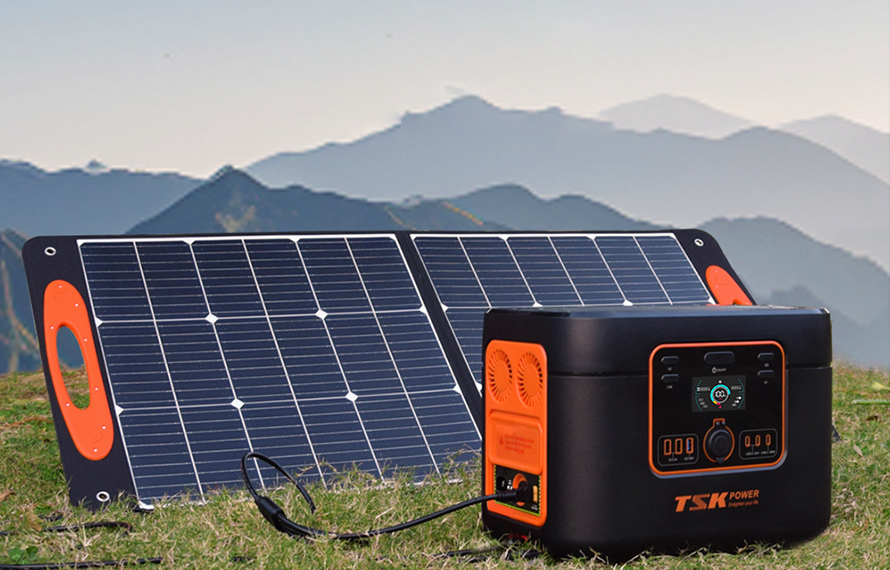An outdoor power supply is a portable power device that can provide stable AC or DC power for various electrical appliances. It usually uses lithium batteries or lithium iron phosphate batteries as energy storage units. It has the characteristics of being light, safe, and environmentally friendly. It is widely used in outdoor activities such as camping, self-driving, and photography.

However, with the reduction in the frequency of use and life of outdoor power supplies, many people may face a problem: how to deal with idle outdoor power supplies? If it is discarded or stored at will, it will not only cause waste of resources and environmental pollution, but also may pose safety hazards. So, are there some better ways to deal with idle outdoor power supplies?
The answer is yes. In this article, we will introduce you to several ways to deal with idle outdoor power supplies, so that your idle items can be turned into treasures, or do some charity.
Method 1: Resell or donate
If your outdoor power supply can still work normally, but it is idle because it is not often used or you want to replace it with a new one, then you can consider reselling it or donating it to someone in need.
If you want to resell, you can post information on some second-hand trading platforms, such as Zhuanzhuan, Paipai, Xianyu, etc., clearly describe the brand, model, capacity, quality, usage, etc. of your outdoor power supply, and provide real photos and videos. Of course, you should also set a reasonable price and pay attention to protecting your privacy and security.
If you want to donate, you can contact the recipients through some public welfare platforms or organizations, such as Feimayi, Yushu, Cainiaoguoguo, etc., such as schools, communities, and rural areas in poor areas. These platforms or organizations will provide free or low-cost mailing services and give you certain rewards or thank-you letters. By donating, you can not only get rid of idle items, but also help others improve their living conditions.
Method 2: Recycling or disassembly
If your outdoor power supply is damaged or expired and can no longer be used normally, then you can consider recycling or disassembling it.
If you want to recycle, you can go to your door or mail it through some professional recycling platforms or organizations, such as Jingdong Paipai, Aihuihui, and Green Dog Recycling. These platforms or institutions will evaluate your outdoor power supply based on its brand, model, capacity, quality, etc., and give you a certain recycling price. After recycling, they will disassemble, classify, and reuse your outdoor power supply to avoid environmental pollution.
For disassembly, you can disassemble the outdoor power supply by yourself and take out the batteries, circuit boards, shells and other components inside. Batteries can be sent to some professional recycling points, such as old battery recycling bins in supermarkets, shopping malls, and schools. Circuit boards can be sent to some waste recycling stations, or you can use some tools to disassemble them and extract some valuable components, such as capacitors, resistors, chips, etc. The shell can be sent to some plastic recycling stations, or you can modify it yourself to make some interesting handicrafts.
Method 3: Modification or Upgrade
If your outdoor power supply can still be used, but the performance is poor or the functions are insufficient, then you can consider modifying or upgrading it.
For modification, you can make some creative modifications to the outdoor power supply according to your needs and preferences, and add some new functions or features. For example, you can add some LED lights, fans, speakers and other small accessories to the outdoor power supply to turn it into a multifunctional outdoor device. Or, you can replace the outdoor power supply with some personalized shells, stickers, pendants and other decorations to make it more beautiful and unique.
For upgrading, you can make some professional upgrades to the outdoor power supply according to your own technical level and conditions to improve its performance or capacity. For example, you can replace some better batteries, circuit boards, inverters and other core components of the outdoor power supply to enable it to output higher power or have a longer battery life. Or, you can connect some other power supply devices in series or parallel to the outdoor power supply, such as solar panels, gasoline generators, etc., so that it can achieve more power supply methods or scenarios.
 2024-08-22
2024-08-22























